Selecting the right stretch fabric for your Latin Dance Dress is crucial. The fabric can significantly impact the look of your costume, your confidence, and even your performance on the dance floor. Many dancers, especially when starting out, can find this choice daunting. Understanding how different fabrics behave and how they affect your appearance is key to creating a stunning Latin dance dress.
My own experience early in my career taught me a valuable lesson about fabric choices the hard way. Back in 1989, preparing for my first U.S. Ballroom Championships, I was determined to make a statement with my dress. Having just moved to Arizona to pursue professional ballroom dancing, I was under pressure to meet the expected physique standards. I diligently lost weight and poured my energy into designing and sewing my first “official” Rhythm dance dress.
I envisioned an avant-garde black and white, asymmetrical gown with Fortuny pleating – inspired by haute couture, which I adored. I invested a significant amount in custom-pleated white silk, feeling incredibly proud of the dress’s complex and fashionable design.
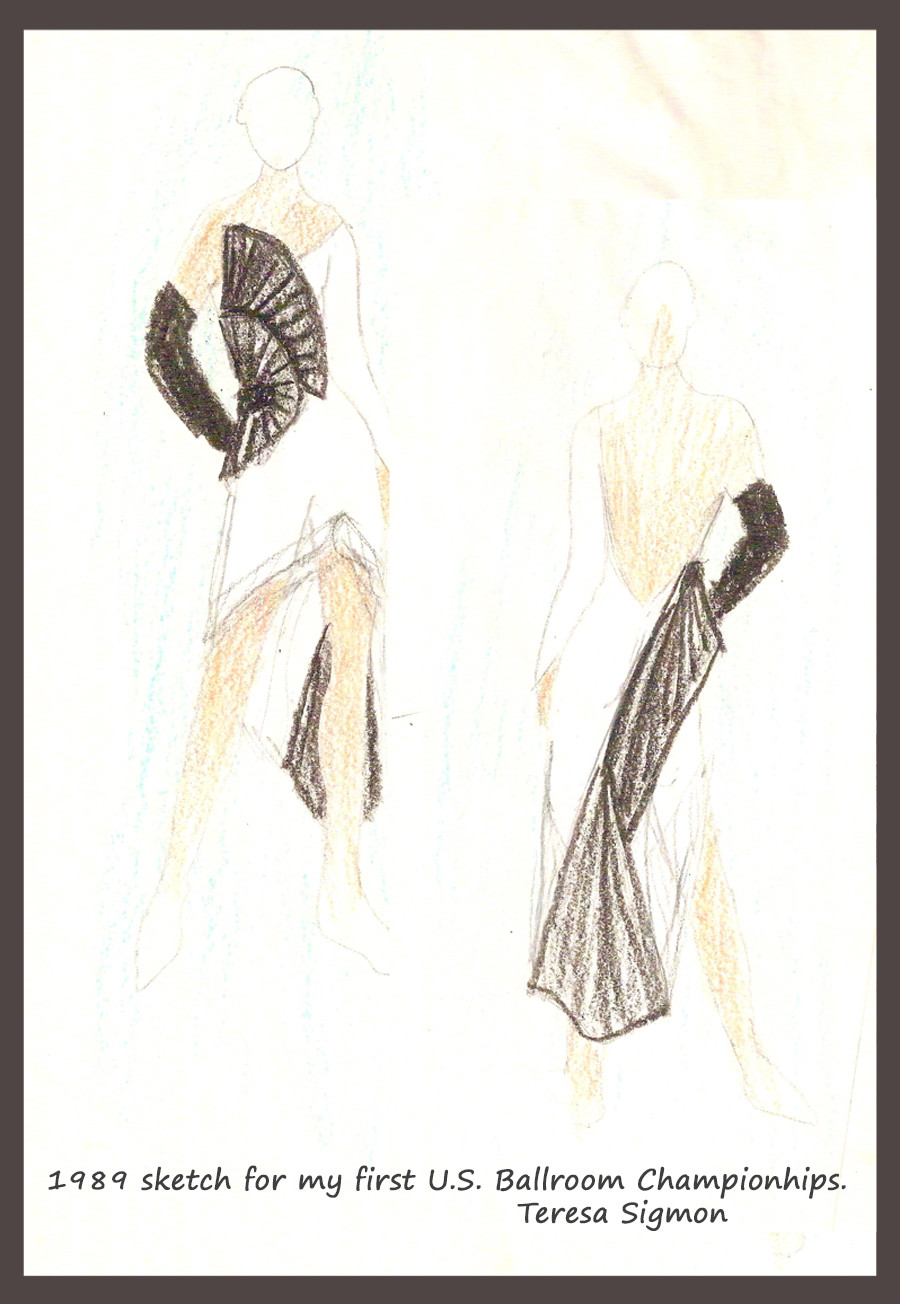 Teresa Sigmon ballroom dance dress sketch fortuny pleating
Teresa Sigmon ballroom dance dress sketch fortuny pleating
However, two critical factors escaped my consideration:
- In 1989, information about ballroom dance fashion norms wasn’t readily available online. Haute couture aesthetics were not yet embraced in the ballroom scene.
- Crucially, I didn’t realize how unforgiving white fabric, combined with extensive pleating, could be. Instead of showcasing my weight loss, the dress made me appear larger than I was.
The aftermath was disheartening. After the initial round at the U.S. Ballroom Championships, a judge approached me, visibly displeased. Gesturing emphatically at my dress, he exclaimed, “Why are you wearing white? It makes you look heavy, especially after you’ve worked so hard to lose weight!”
Crushed and embarrassed, I discarded the dress immediately upon returning home. All the effort, expense, and countless pricked fingers felt utterly wasted, worse than pointless. My beautiful, fashionable creation became a symbol of failure.
That experience was a turning point. It was then I truly grasped the profound impact of fabric color and texture on visual perception. White, I learned, is the least flattering color if your goal is to appear slimmer. Furthermore, the Fortuny pleating and large fan details added unwanted volume to my frame. My attempt to create a sophisticated, slimming Latin dance dress backfired spectacularly due to poor fabric choices.
This personal dance dress disaster serves as a cautionary tale to help you avoid similar mistakes.
Fabric Choices are Paramount for Latin Dance Dresses
When creating Latin dance dresses, or any dance or ice skating costumes, understanding the dos and don’ts of stretch fabrics is essential.
The Impact of Color: Light vs. Dark Fabrics for Latin Dresses
Color plays a vital role in how your Latin dance dress looks on stage.
If you desire a slimmer appearance, opt for medium to dark colors. Light colors, especially white and pastels, tend to make you look larger.
Conversely, if you are slender and wish to add visual volume, medium to light shades can be beneficial.
For a deeper dive into color theory and personalized color analysis, explore resources on discovering your best colors and styles. Understanding your color palette can elevate your Latin dance dress choices significantly.
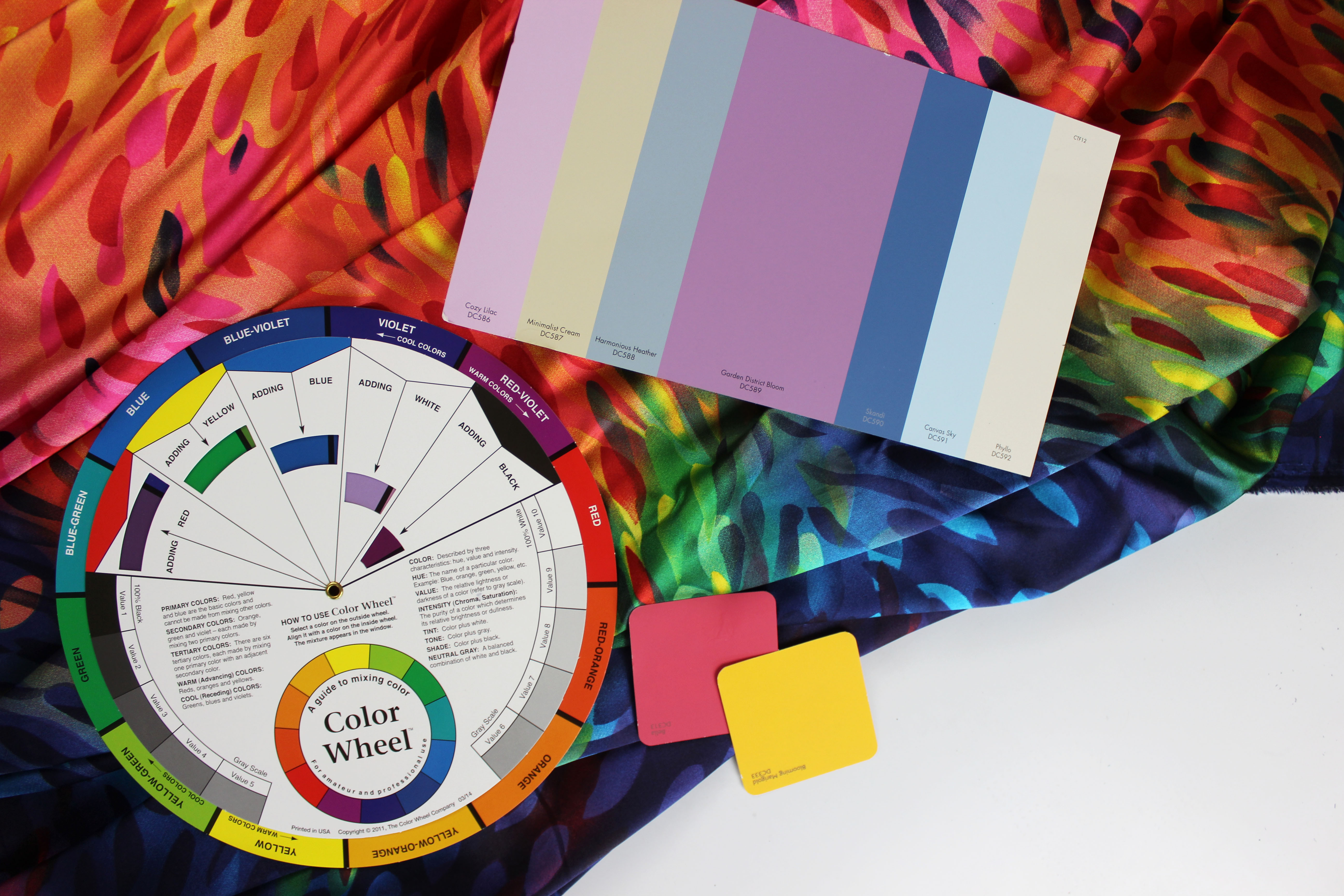 Color combinations for dance costumes
Color combinations for dance costumes
Shine and Texture: Shiny vs. Matte Stretch Fabrics in Latin Dance
Beyond color, the sheen of your fabric is another crucial element to consider when selecting materials for your Latin dance dress.
Matte stretch fabrics are universally flattering. They possess a “neutral” quality that can create a lengthening and slimming effect, particularly when combined with strategically placed accent fabrics. Matte fabrics are a safe and elegant choice, suitable for most body types. Importantly, they won’t inadvertently make a slender dancer appear smaller.
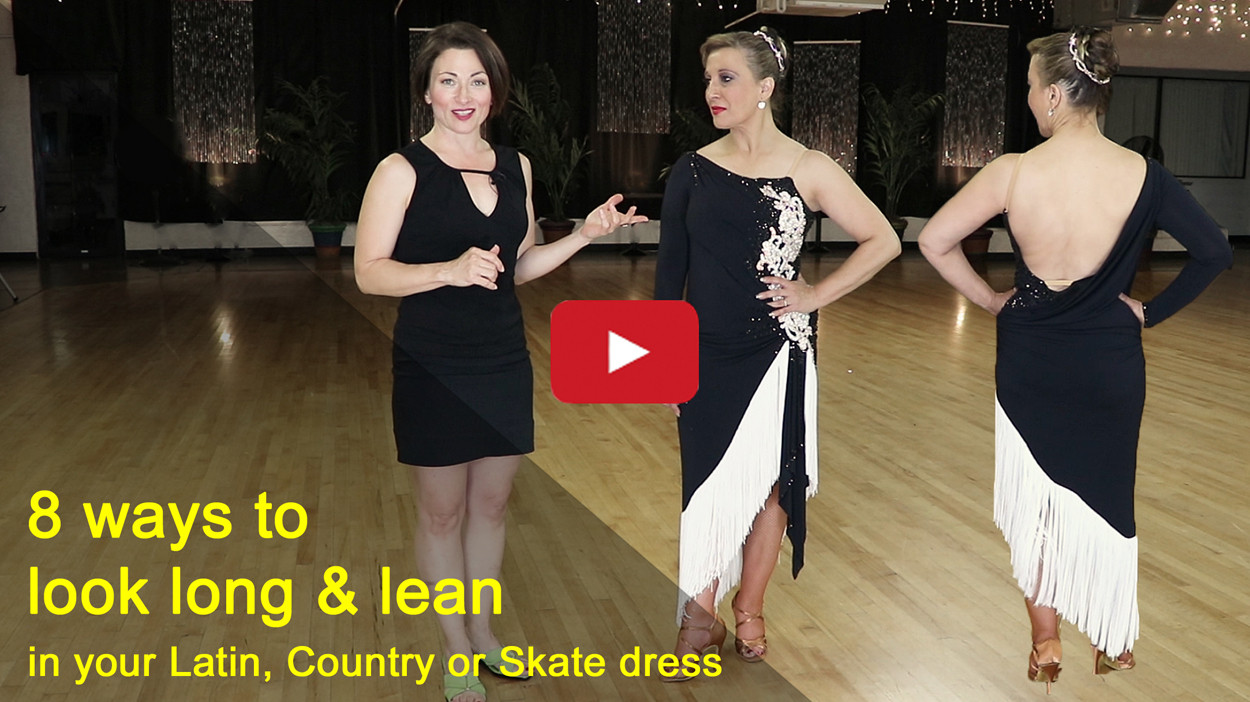 Long line Latin dress matte fabric with fringe
Long line Latin dress matte fabric with fringe
The neutral backdrop of matte fabric also enhances the brilliance of rhinestones and other embellishments, making them stand out beautifully on your Latin dress.
Consider exploring examples of Latin dresses using matte stretch crepe with contrasting lace appliqués to see how effectively matte fabrics can create a taller silhouette.
Shiny fabrics, on the other hand, tend to add visual weight. Examples include metallic foil, sequined fabrics, hologram materials, and crushed velvet. While these can be eye-catching, they can also be less forgiving in terms of figure enhancement.
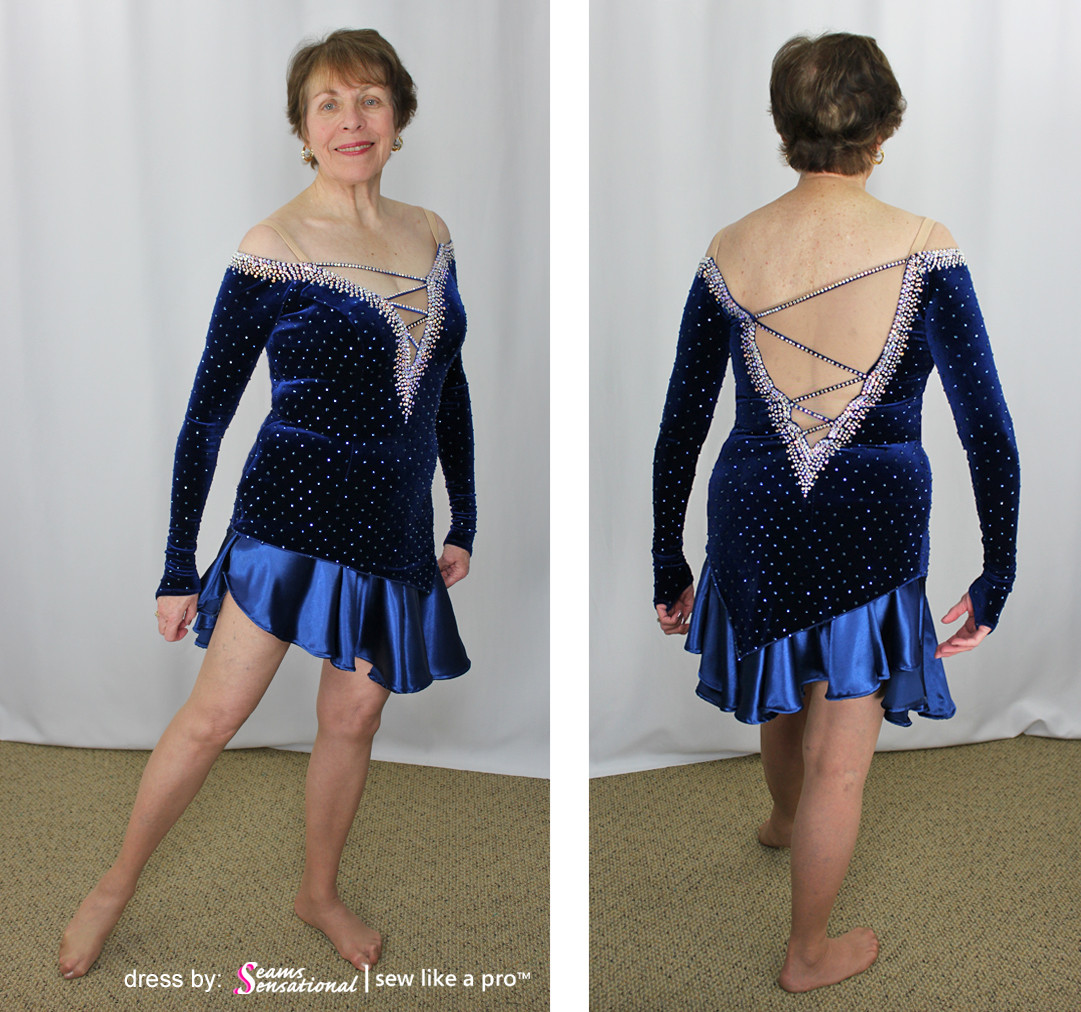 Velvet Latin dance costume with mesh](https://seamssensational.com/latin-dance-skirt/)
Velvet Latin dance costume with mesh](https://seamssensational.com/latin-dance-skirt/)
If you are drawn to the allure of shine and sparkle but want to avoid adding bulk, use shiny fabrics strategically as accents rather than as the primary material for your Latin dance dress.
For instance, consider a design featuring a matte stretch velvet as the main fabric, complemented by a shiny crepe back satin for a flirty, short skirt. This approach allows you to incorporate shine while maintaining a flattering silhouette.
Explore designs that skillfully integrate shiny accents into Latin dresses to inspire your own creations.
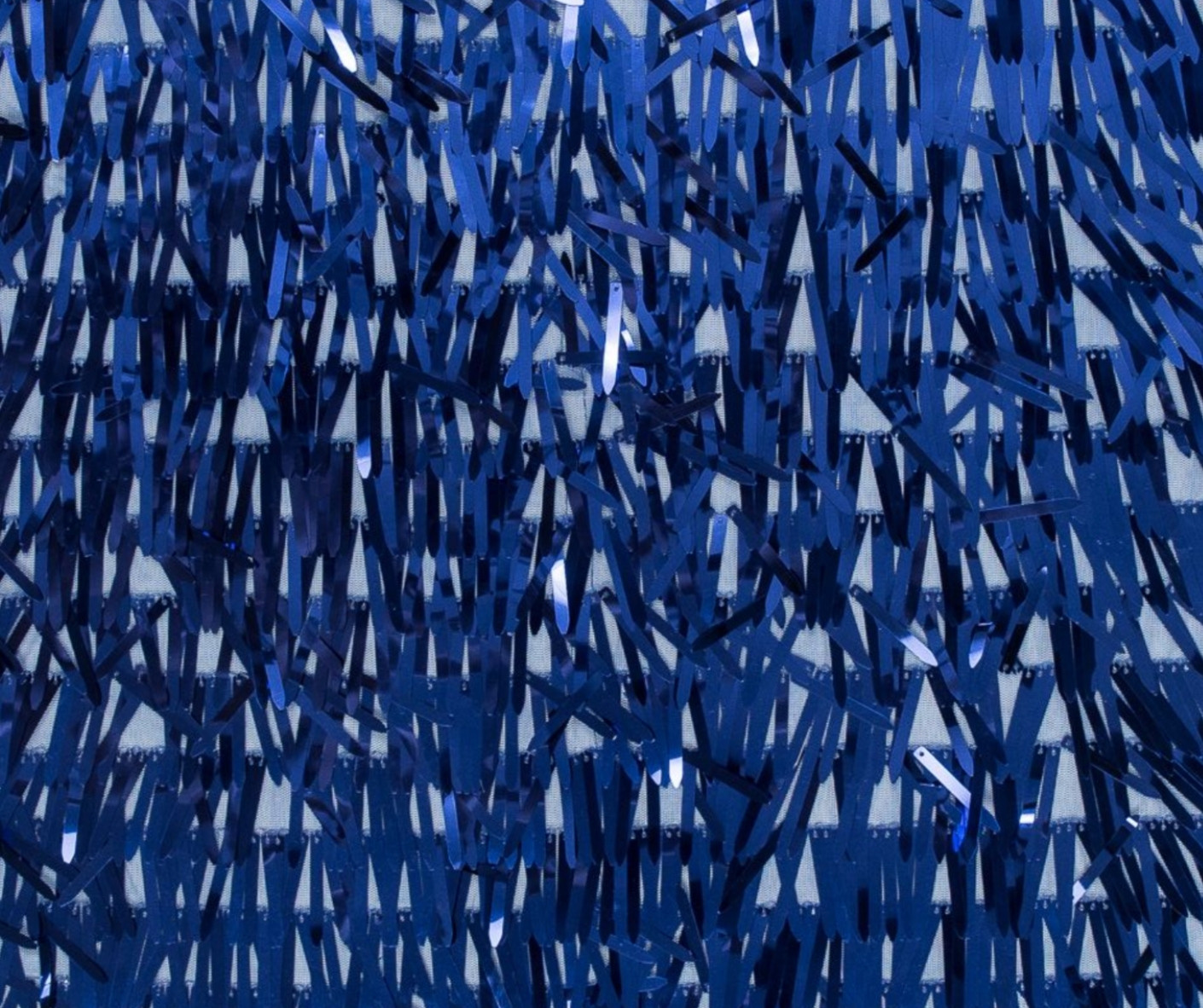 Example of shiny metallic fringe on a dance dressExample of shiny metallic fringe detail on a Latin dance dress. Fringe itself can vary in sheen; regular chainette fringe is matte, while metallic fringe offers a shiny alternative. Rhinestoned fringe, whether handmade or purchased, adds another dimension of sparkle.
Example of shiny metallic fringe on a dance dressExample of shiny metallic fringe detail on a Latin dance dress. Fringe itself can vary in sheen; regular chainette fringe is matte, while metallic fringe offers a shiny alternative. Rhinestoned fringe, whether handmade or purchased, adds another dimension of sparkle.
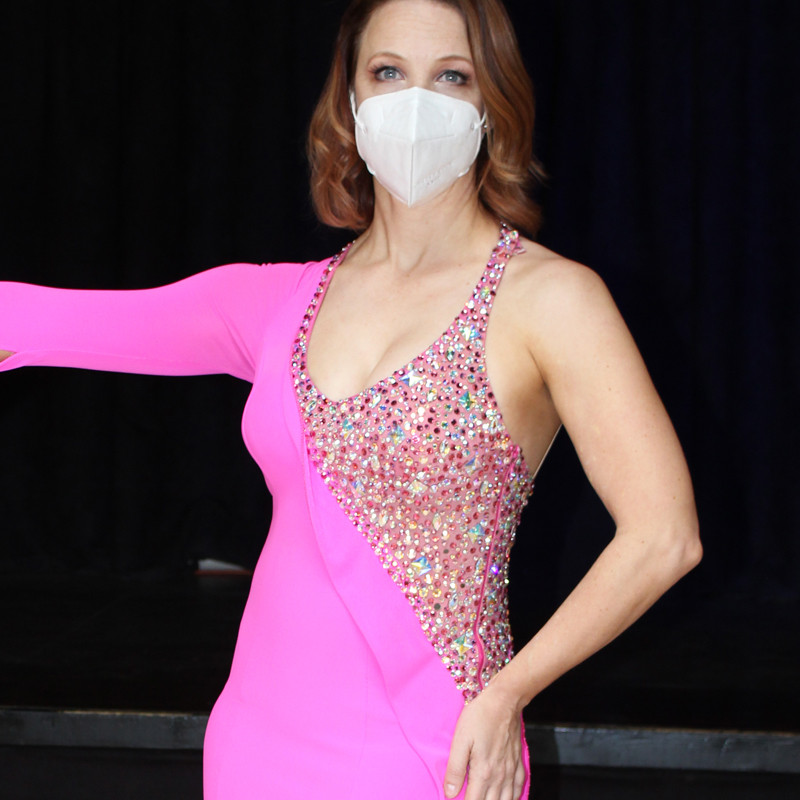 Example of matte stretch fabric with rhinestones on a Latin dress
Example of matte stretch fabric with rhinestones on a Latin dress
Adding rhinestones can transform the appearance of stretch fabrics. For a slimming yet sparkling Latin dance dress, matte fabrics paired with a strategic rhinestone pattern are often the most effective choice. A matte stretch crepe base with mesh accent areas adorned with rhinestones can create a stunning and figure-flattering effect, as seen in this pink Latin dress.
Explore resources for rhinestone inspiration specifically tailored for dance and skating costumes to further enhance your design ideas.
Stretch Velvet for Latin Dance: Dos and Don’ts
Stretch velvet is generally considered a matte fabric, unless it is crushed velvet, which leans towards a shiny finish. It’s a versatile choice suitable for many dancers and skaters. However, be aware that velvet varies in thickness. Always obtain samples to assess the weight and nap (pile height) of the velvet.
For dancers wanting to appear slimmer or stay cooler during performances, a lightweight velvet with a short nap is preferable. Conversely, a thinner dancer or a skater needing warmth might benefit from a thicker velvet with a longer nap.
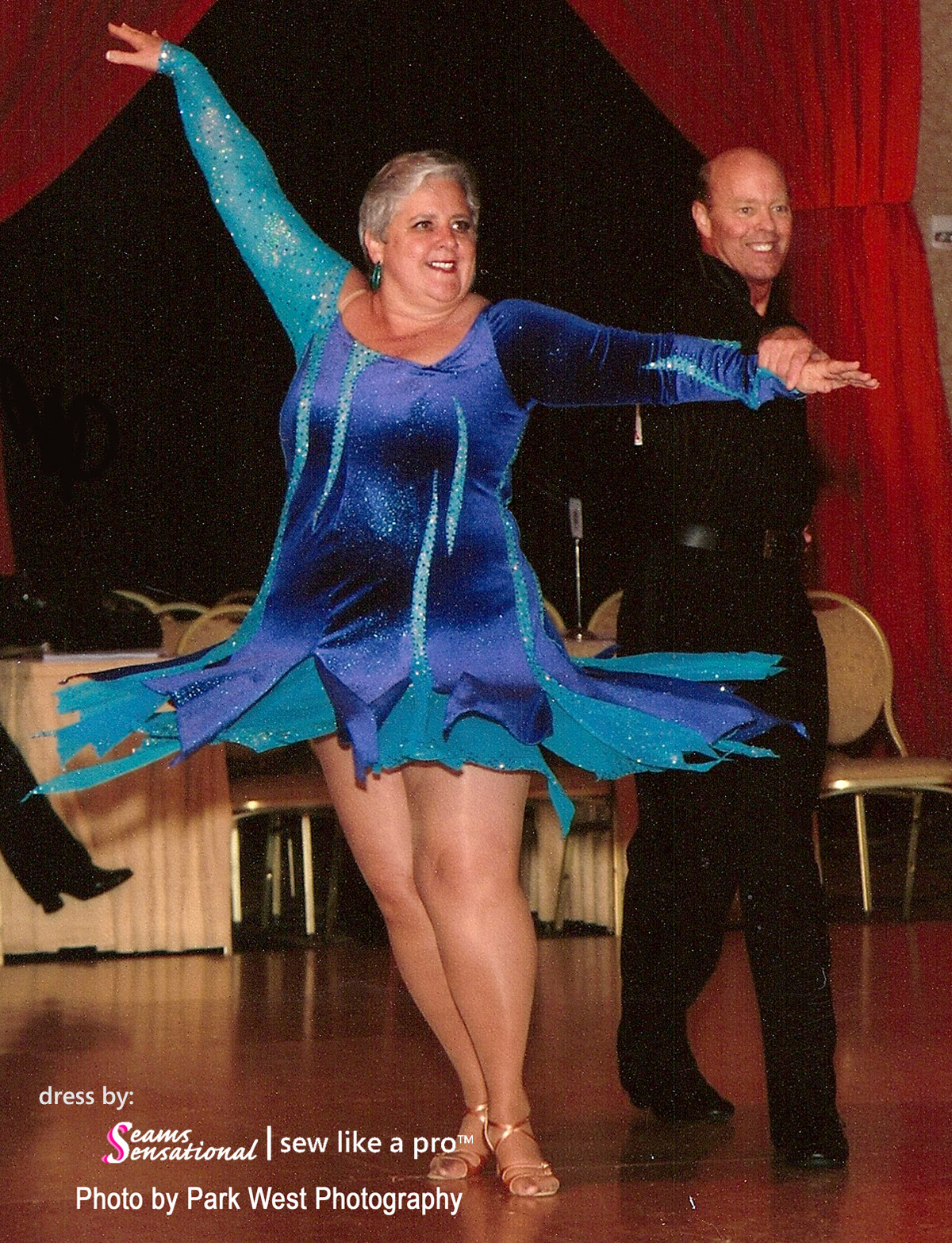 Dancer in a purple velvet Latin dress
Dancer in a purple velvet Latin dress
Consider this example of a Latin dress made from a lightweight matte glitter stretch velvet. The glitter, being tone-on-tone, provides subtle shimmer akin to delicate rhinestones, adding depth without overwhelming shine. Shiny glitter mesh accents were used strategically to add flair without compromising the overall silhouette. This demonstrates how to use velvet effectively in a Latin dance dress to enhance curves in a flattering way.
Further explore resources and tips specifically focused on creating velvet dance dresses for more in-depth guidance.
Handling Stretch Fabrics for Your Latin Dress Project
Sewing with stretch fabrics presents unique challenges because the stretch factor varies significantly. Fabric type, manufacturer, and even color (dye processes can affect stretch) all contribute to these variations.
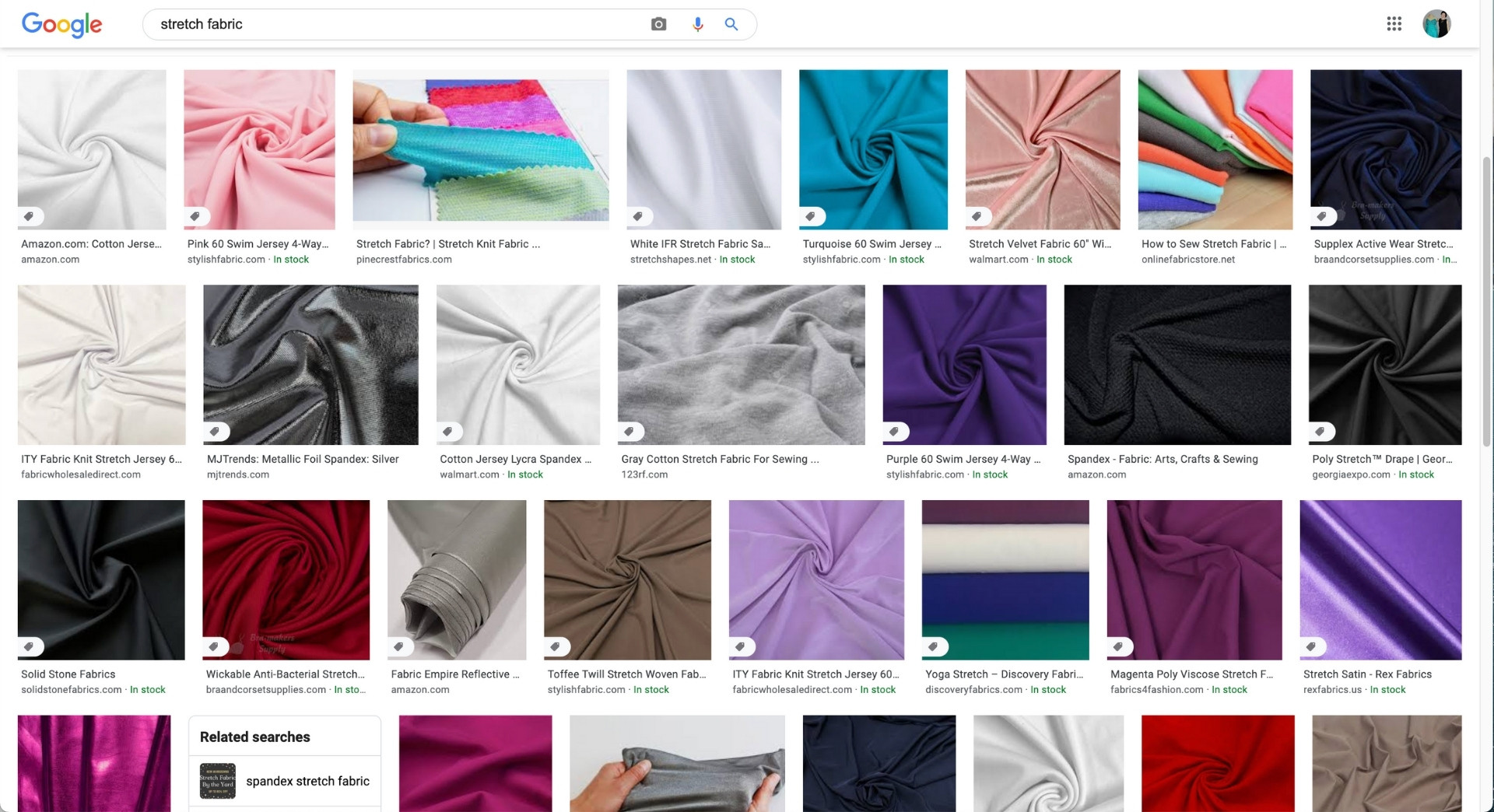 Selection of stretch fabrics for dance costumes
Selection of stretch fabrics for dance costumes
The key takeaway? Always request fabric samples whenever possible. This allows you to assess the drape, stretch, and handle of the fabric before committing to your Latin dance dress project.
For guidance on sourcing stretch fabrics, explore directories of fabric stores specializing in dance and performance materials.
Mastering the art of sewing with stretch fabrics, including fitting techniques and pattern adjustments based on fabric stretch, is a valuable skill for any dance costume designer. Consider seeking comprehensive sewing education, especially if you are venturing into creating your own Latin dance dresses.
